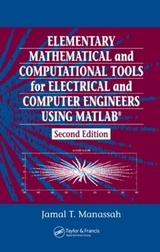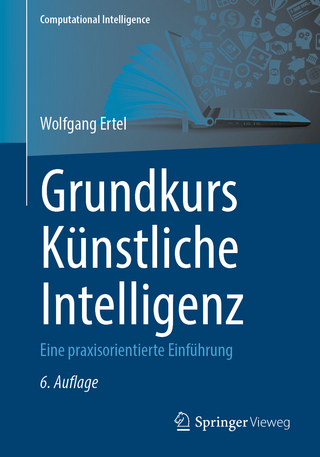
Elementary Mathematical and Computational Tools for Electrical and Computer Engineers Using MATLAB
Crc Press Inc (Verlag)
978-0-8493-1080-5 (ISBN)
- Titel erscheint in neuer Auflage
- Artikel merken
Engineers around the world depend on MATLAB for its power, usability, and outstanding graphics capabilities. Yet too often, engineering students are either left on their own to acquire the background they need to use MATLAB, or they must learn the program concurrently within an advanced course. Both of these options delay students from solving realistic design problems, especially when they do not have a text focused on applications relevant to their field and written at the appropriate level of mathematics.
Ideal for use as a short-course textbook and for self-study Elementary Mathematical and Computational Tools for Electrical and Computer Engineers Using MATLAB fills that gap. Accessible after just one semester of calculus, it introduces the many practical analytical and numerical tools that are essential to success both in future studies and in professional life. Sharply focused on the needs of the electrical and computer engineering communities, the text provides a wealth of relevant exercises and design problems. Changes in MATLAB's version 6.0 are included in a special addendum.
The lack of skills in fundamental quantitative tools can seriously impede progress in one's engineering studies or career. By working through this text, either in a lecture/lab environment or by themselves, readers will not only begin mastering MATLAB, but they will also hone their analytical and computational skills to a level that will help them to enjoy and succeed in subsequent electrical and computer engineering pursuits.
INTRODUCTION TO MATLAB AND ITS GRAPHICS CAPABILITIES
Getting Started
Basic Algebraic Operations and Functions
Plotting Points
M-files
MATLAB Simple Programming
Array Operations
Curve and Surface Plotting
Polar Plots
Animation
Histograms
Printing and Saving Work in MATLAB
MATLAB Commands Review
DIFFERENCE EQUATIONS
Simple Linear Form
Amortization
An Iterative Geometric Construct: The Koch Curve
Solution of Linear Constant Coefficients Difference Equations
Convolution-Summation of First-Order System with Constant Coefficients
General First Order Linear Difference Equations
Nonlinear Difference Equations
Fractals and Computer Art
Generation of Special Functions from their Recursion Relations
ELEMENTARY FUNCTIONS AND SOME OF THEIR USES
Function Files
Examples with Affine Functions
Examples with Quadratic Functions
Examples with Polynomial Functions
Examples with Trigonometric Functions
Examples with the Logarithmic Function
Examples with the Exponential Function
Examples with Hyperbolic Functions and their Inverses
Commonly Used Signal Processing Functions
Animation of a Moving Rectangular Pulse
MATLAB Commands Review
NUMERICAL DIFFERENTIATION, INTEGRATION, AND SOLUTIONS OF ORDINARY DIFFERENTIAL EQUATIONS
Limits of Indeterminate Forms
Derivative of a Function
Infinite Sums
Numerical Integration
A Better Numerical Differentiator
A Better Numerical Integrator: Simpson's Rule
Numerical Solution of ODE
MATLAB Commands Review
ROOT SOLVING AND OPTIMIZATION METHODS
Finding the Real Roots of a Function
Roots of a Polynomial
Optimization Methods
MATLAB Commands Review
COMPLEX NUMBERS
Introduction
The Basics
Complex Conjugation and Division
Polar Form of Complex Numbers
Analytical Solutions of Constant Coefficients ODE
Phasors
Interference and Diffraction of Electromagnetic Waves
Solving ac Circuits with Phasors
| Erscheint lt. Verlag | 11.5.2001 |
|---|---|
| Zusatzinfo | 1118 equations; 1 Tables, black and white; 50 Illustrations, black and white |
| Verlagsort | Bosa Roca |
| Sprache | englisch |
| Maße | 156 x 235 mm |
| Gewicht | 522 g |
| Themenwelt | Mathematik / Informatik ► Informatik ► Theorie / Studium |
| Mathematik / Informatik ► Mathematik ► Angewandte Mathematik | |
| Mathematik / Informatik ► Mathematik ► Computerprogramme / Computeralgebra | |
| Technik ► Elektrotechnik / Energietechnik | |
| ISBN-10 | 0-8493-1080-6 / 0849310806 |
| ISBN-13 | 978-0-8493-1080-5 / 9780849310805 |
| Zustand | Neuware |
| Informationen gemäß Produktsicherheitsverordnung (GPSR) | |
| Haben Sie eine Frage zum Produkt? |
aus dem Bereich



